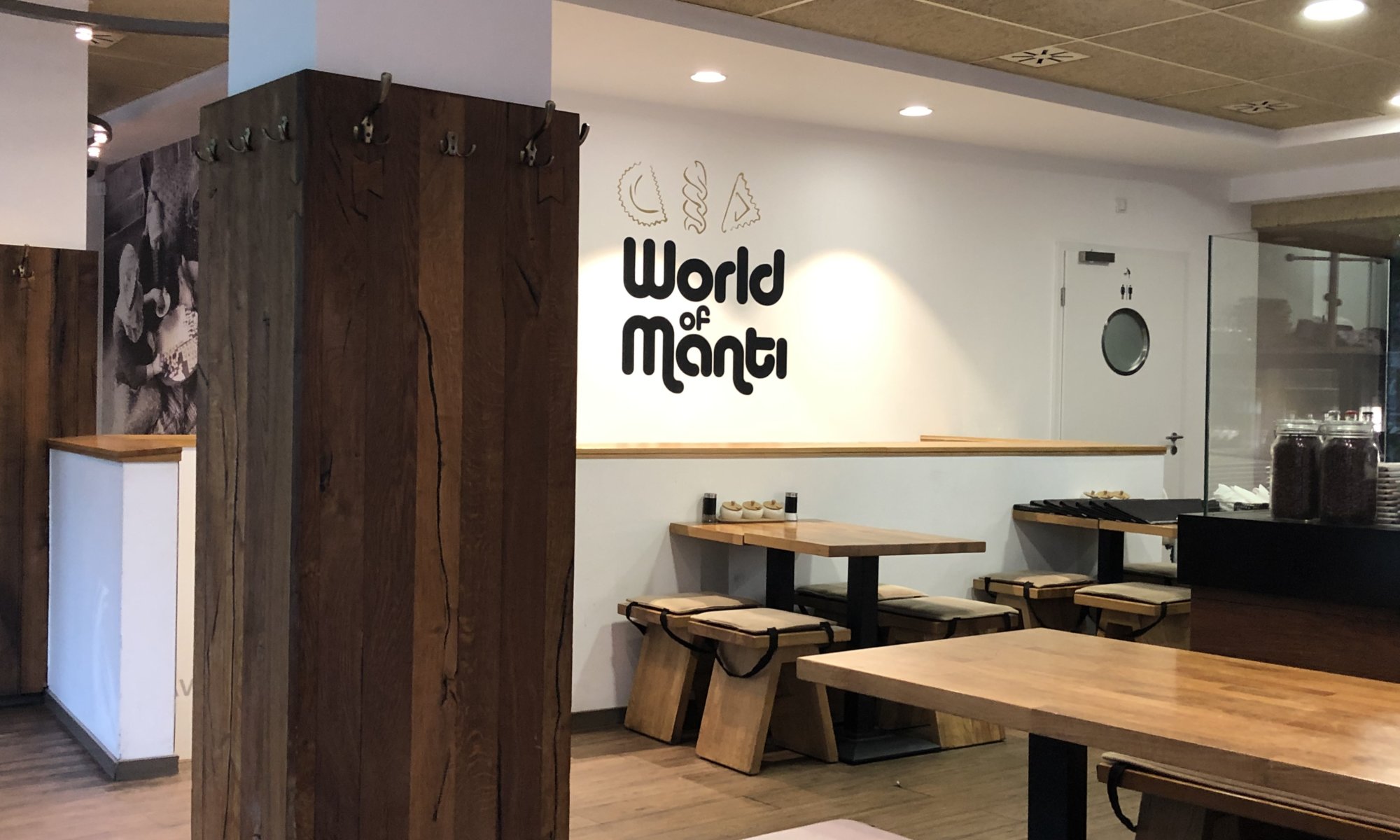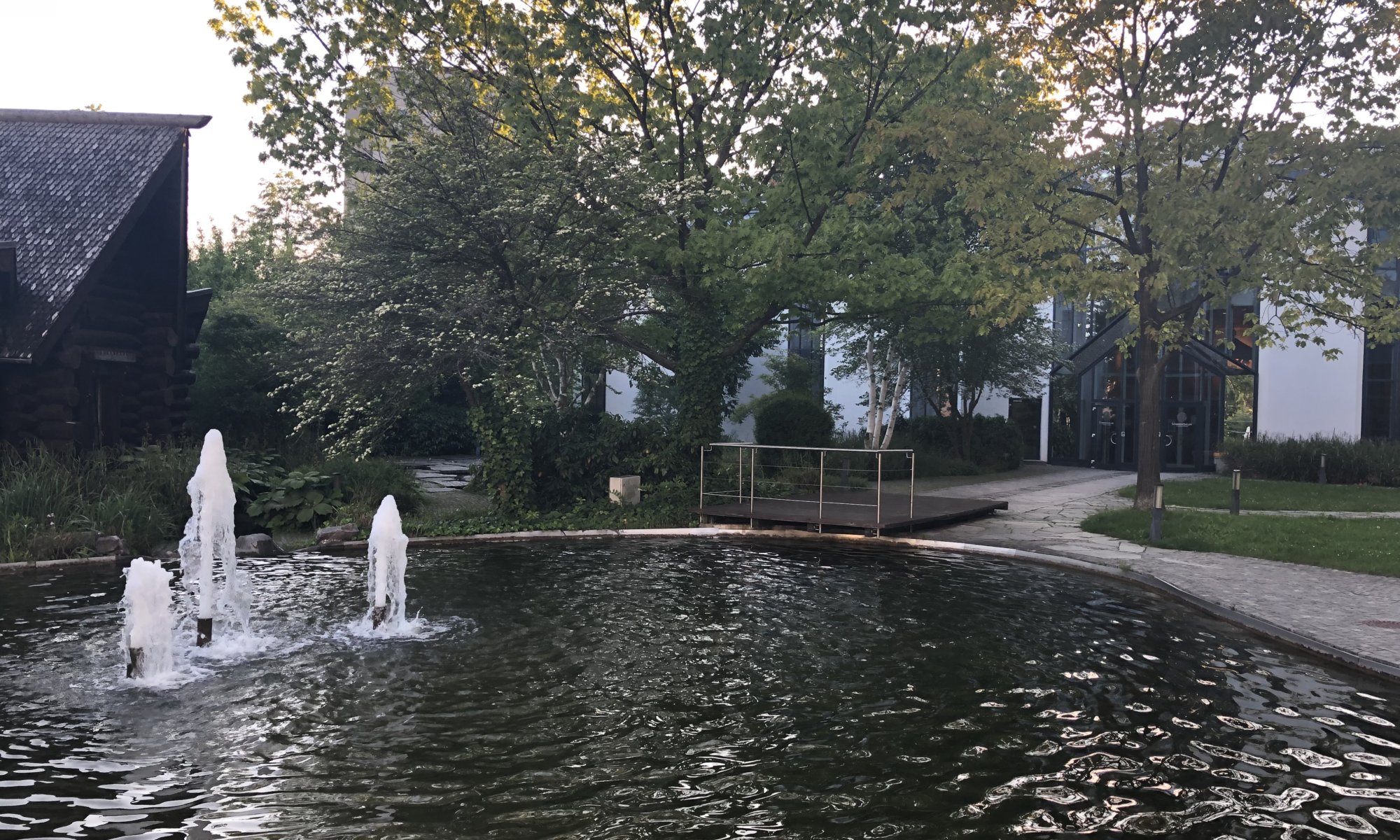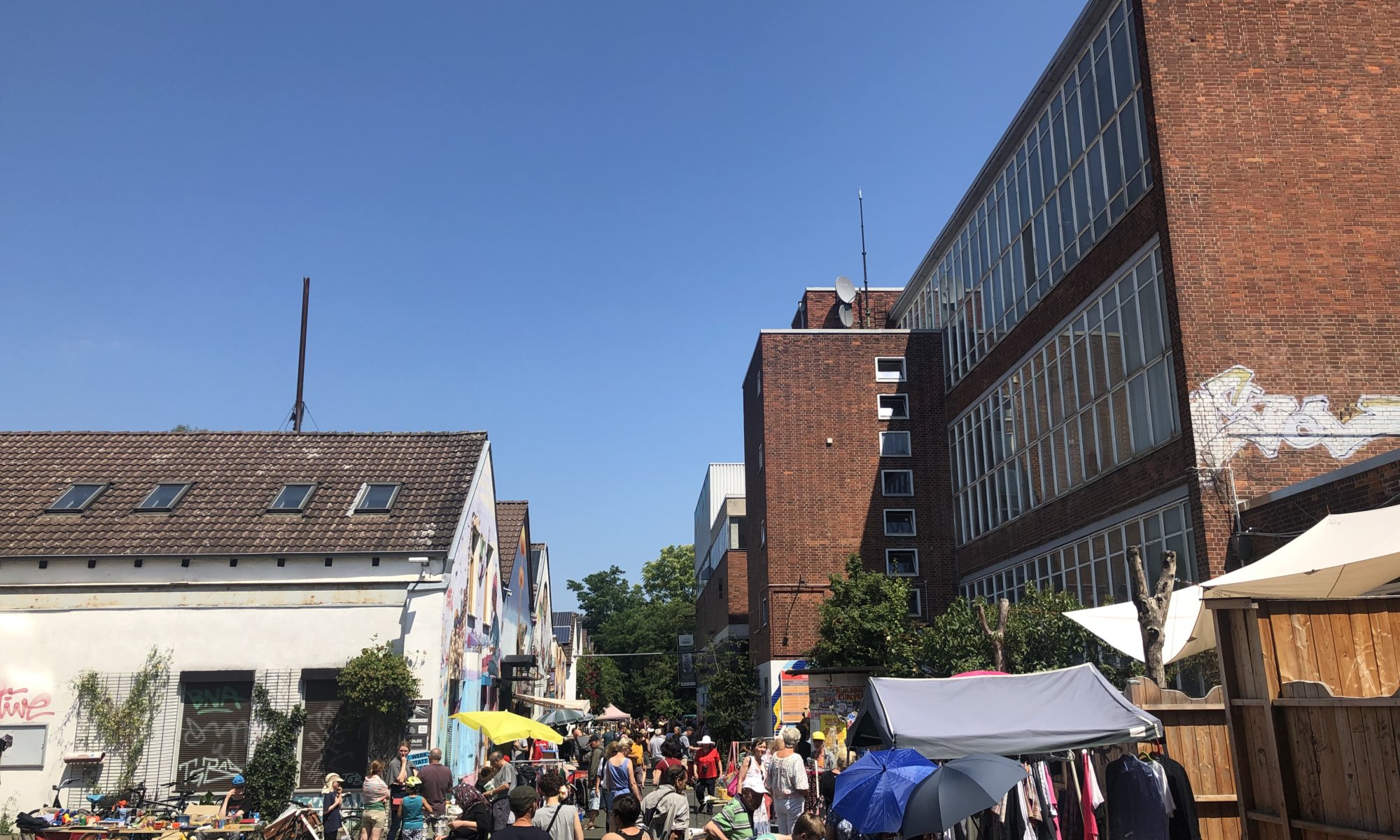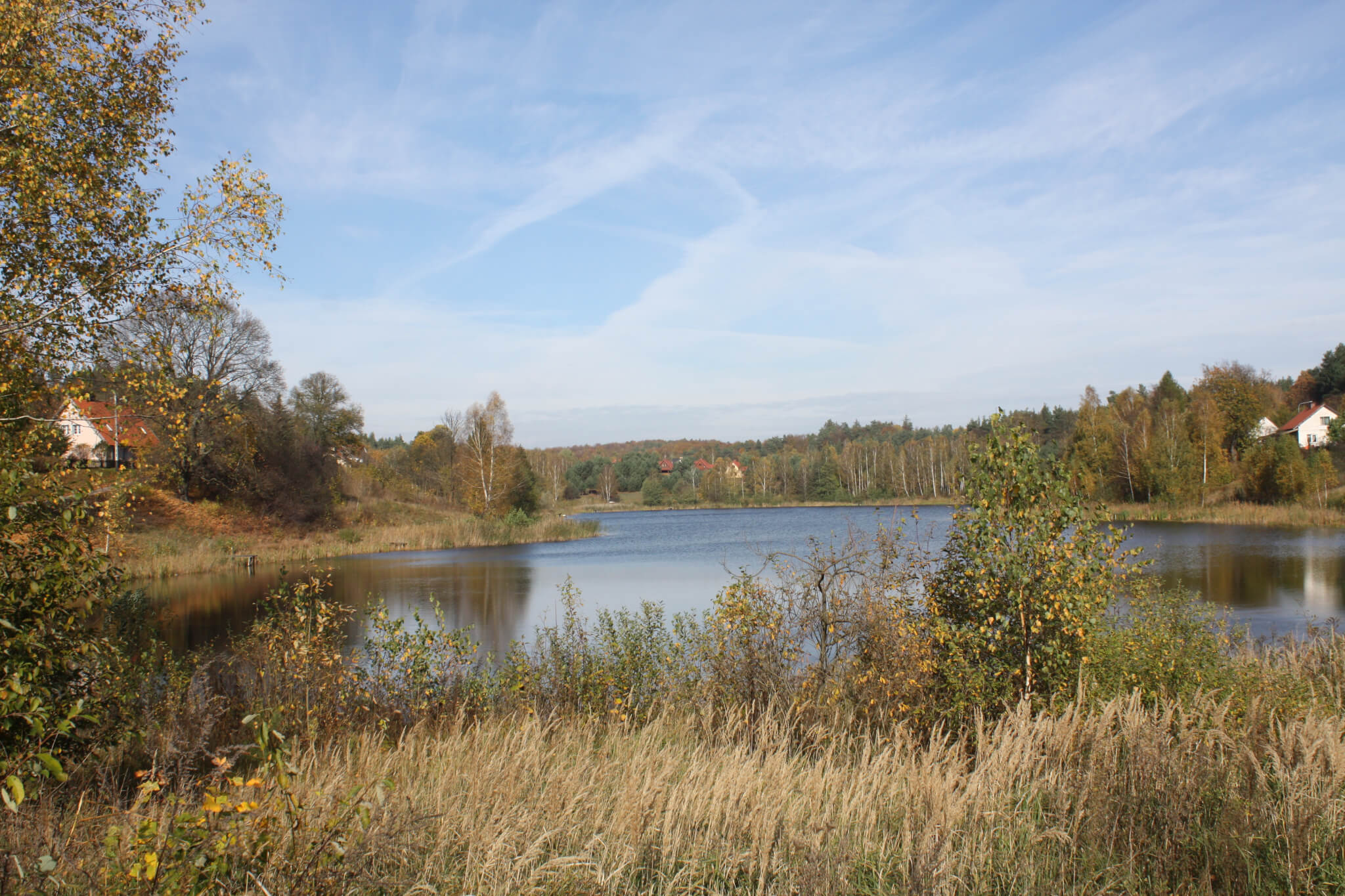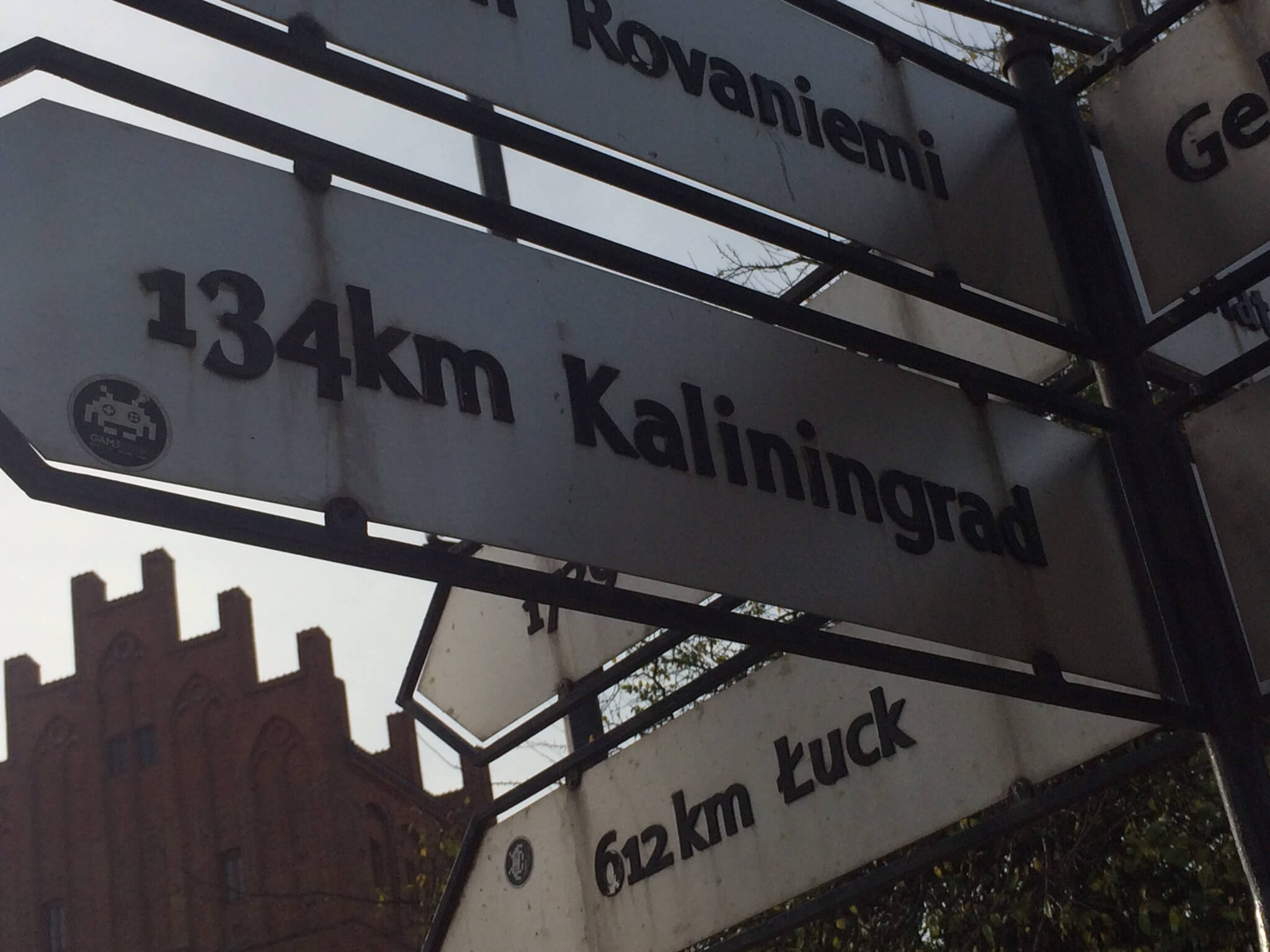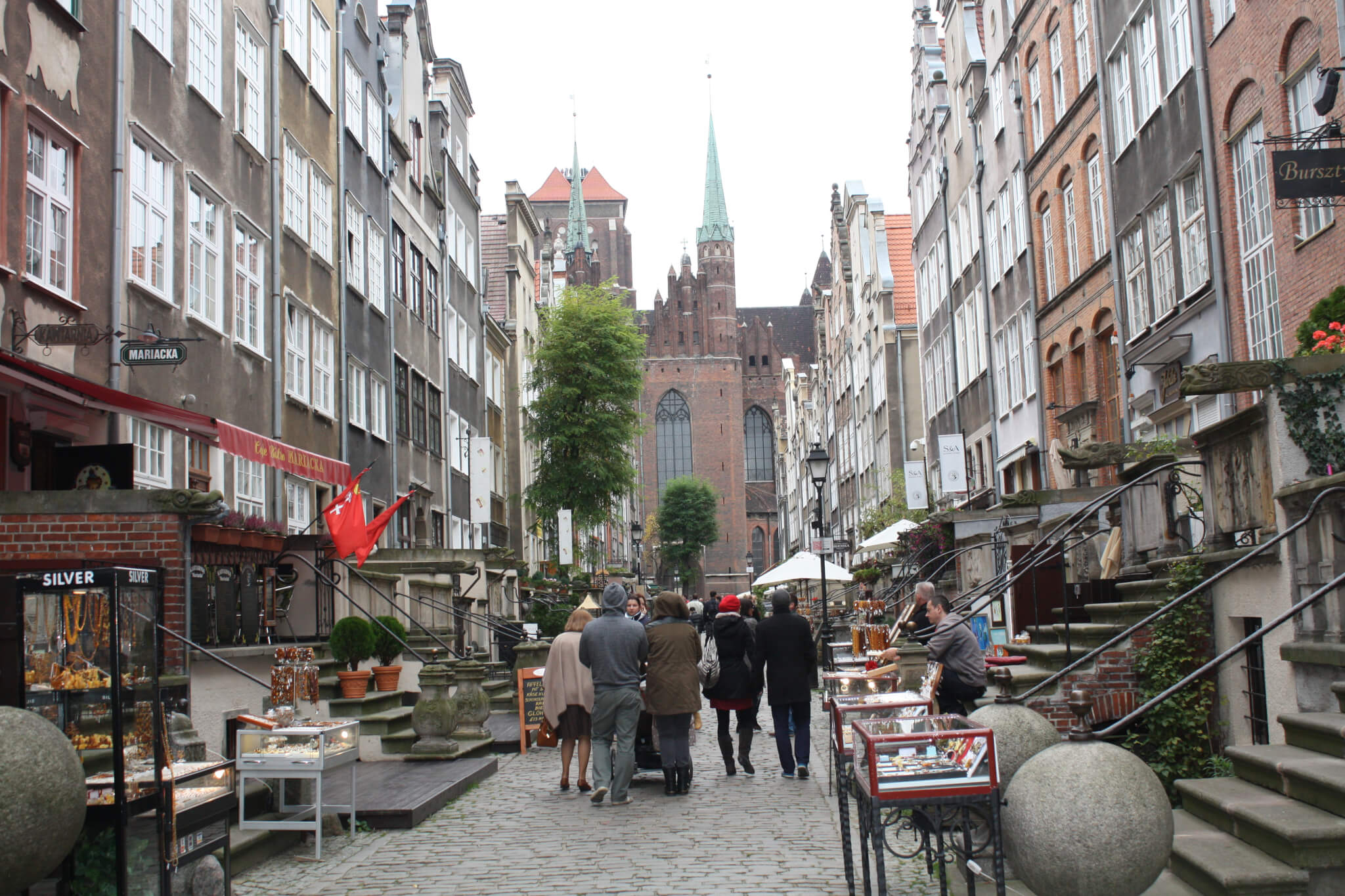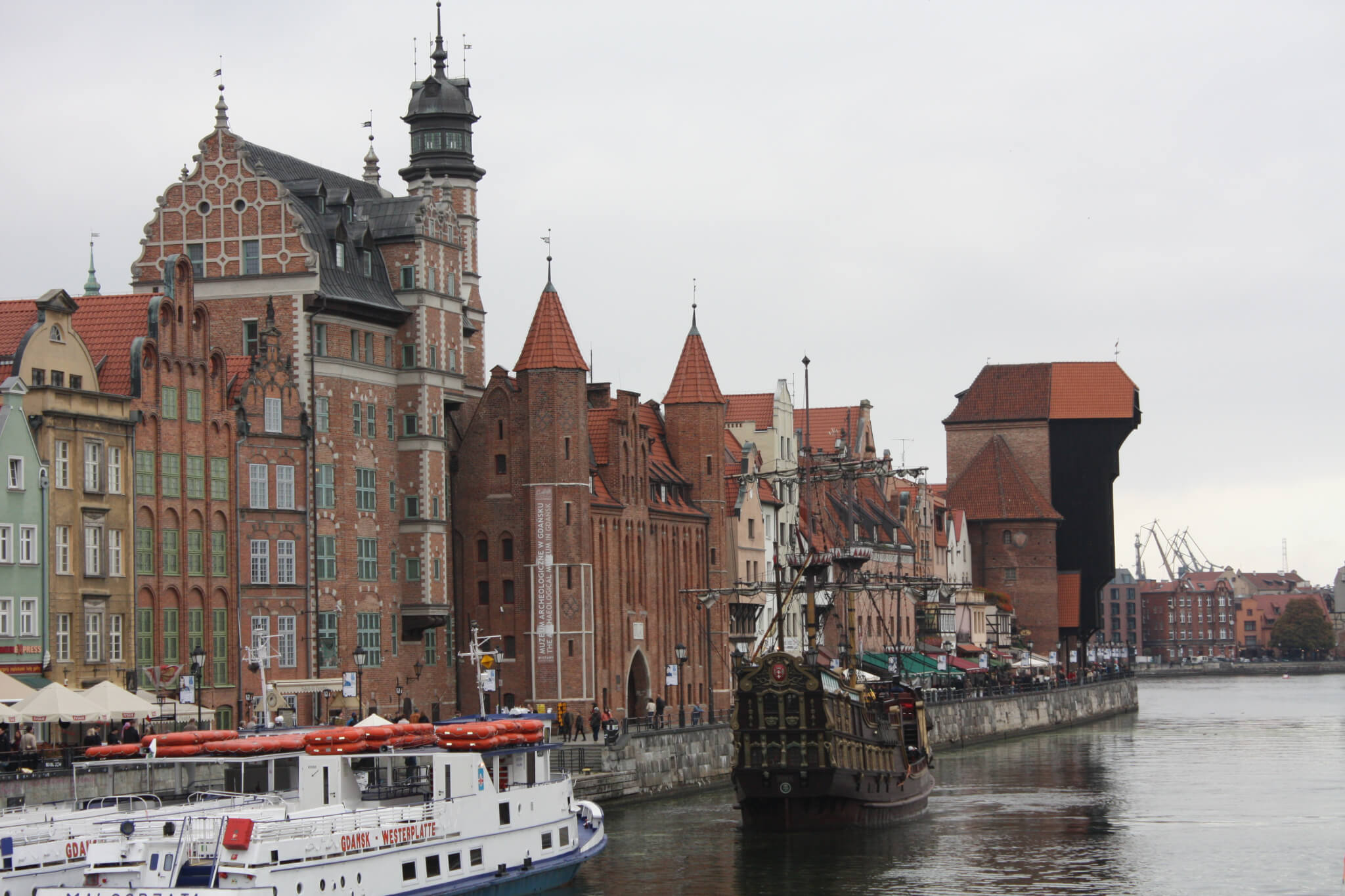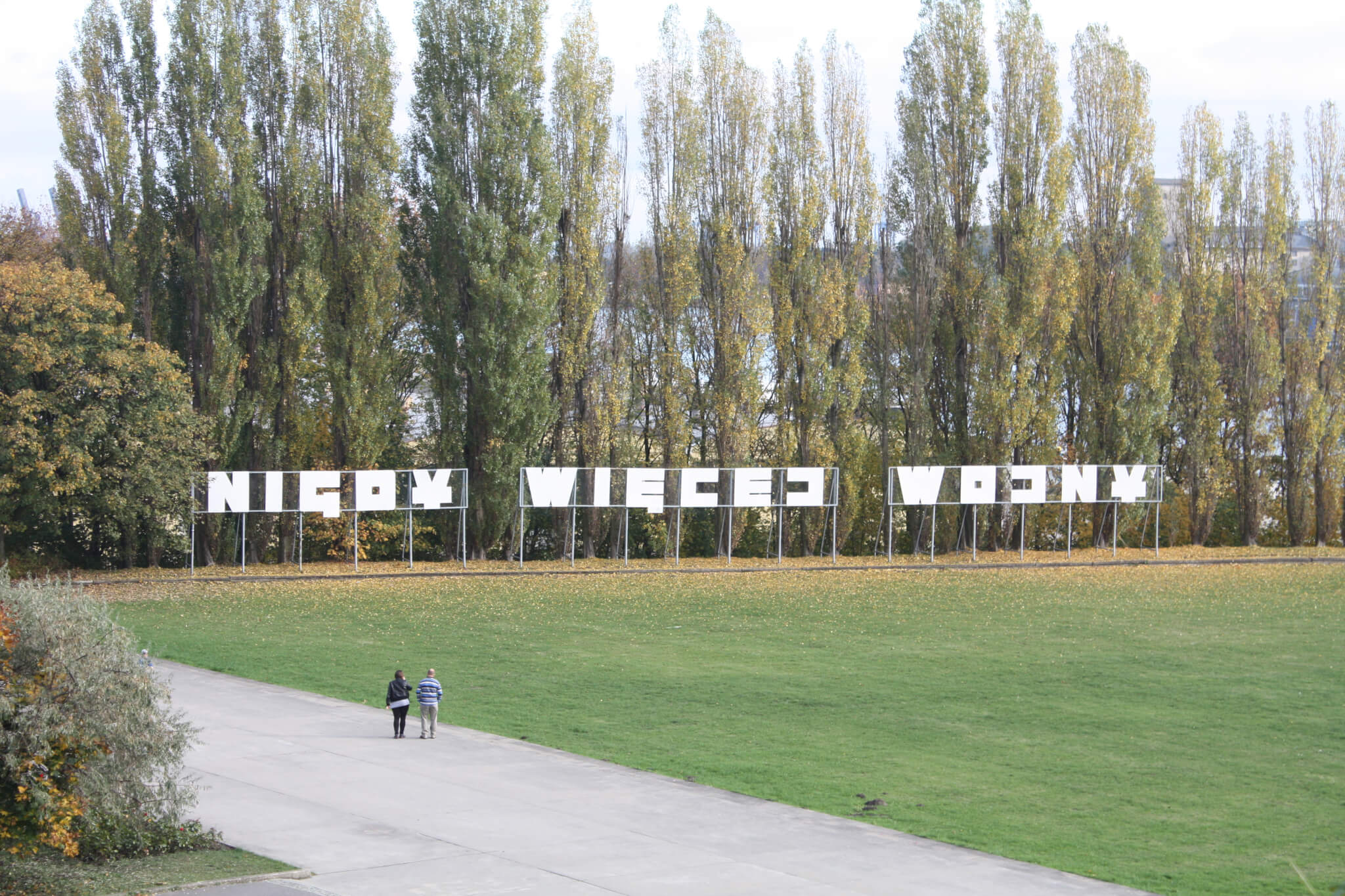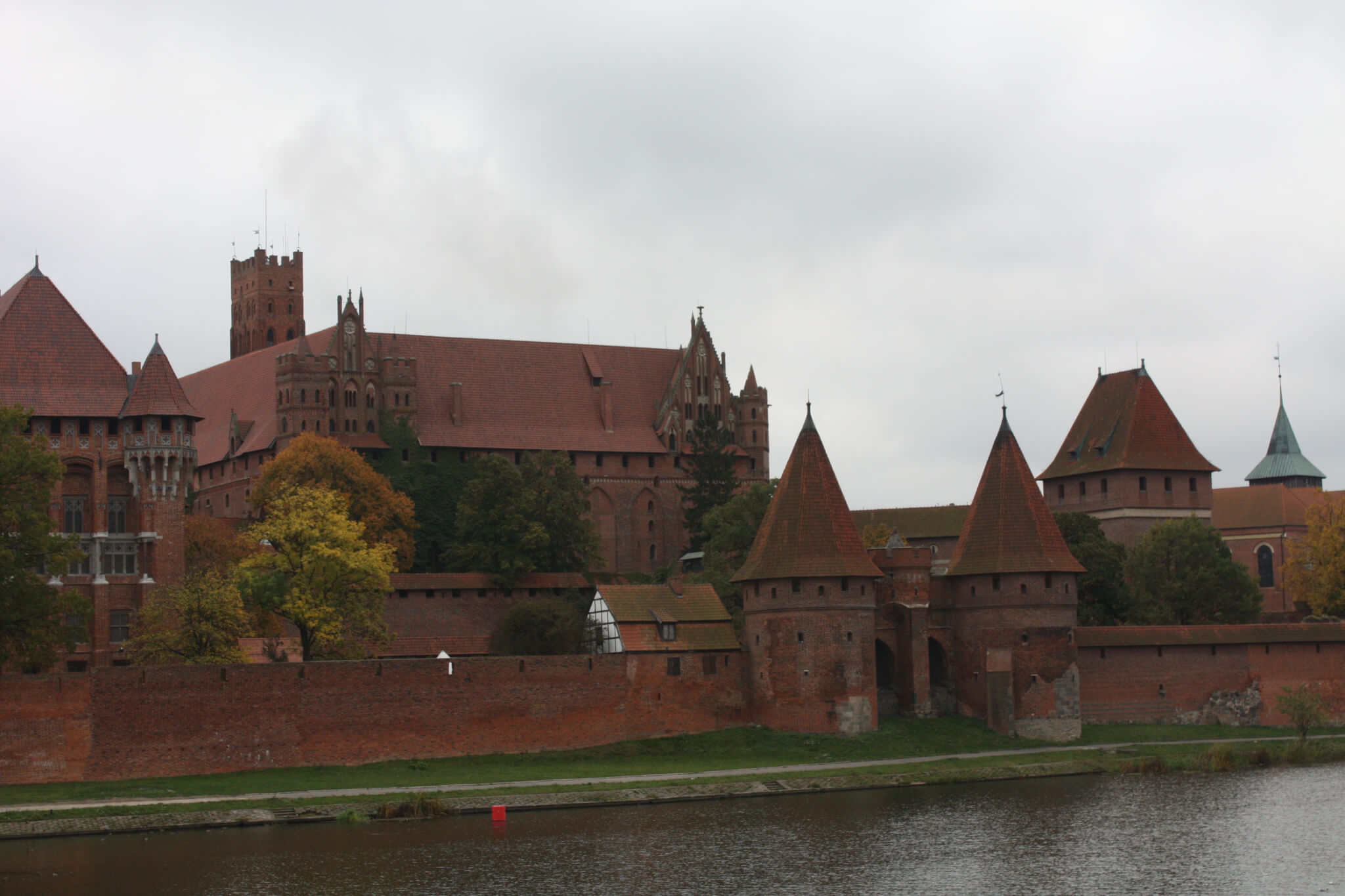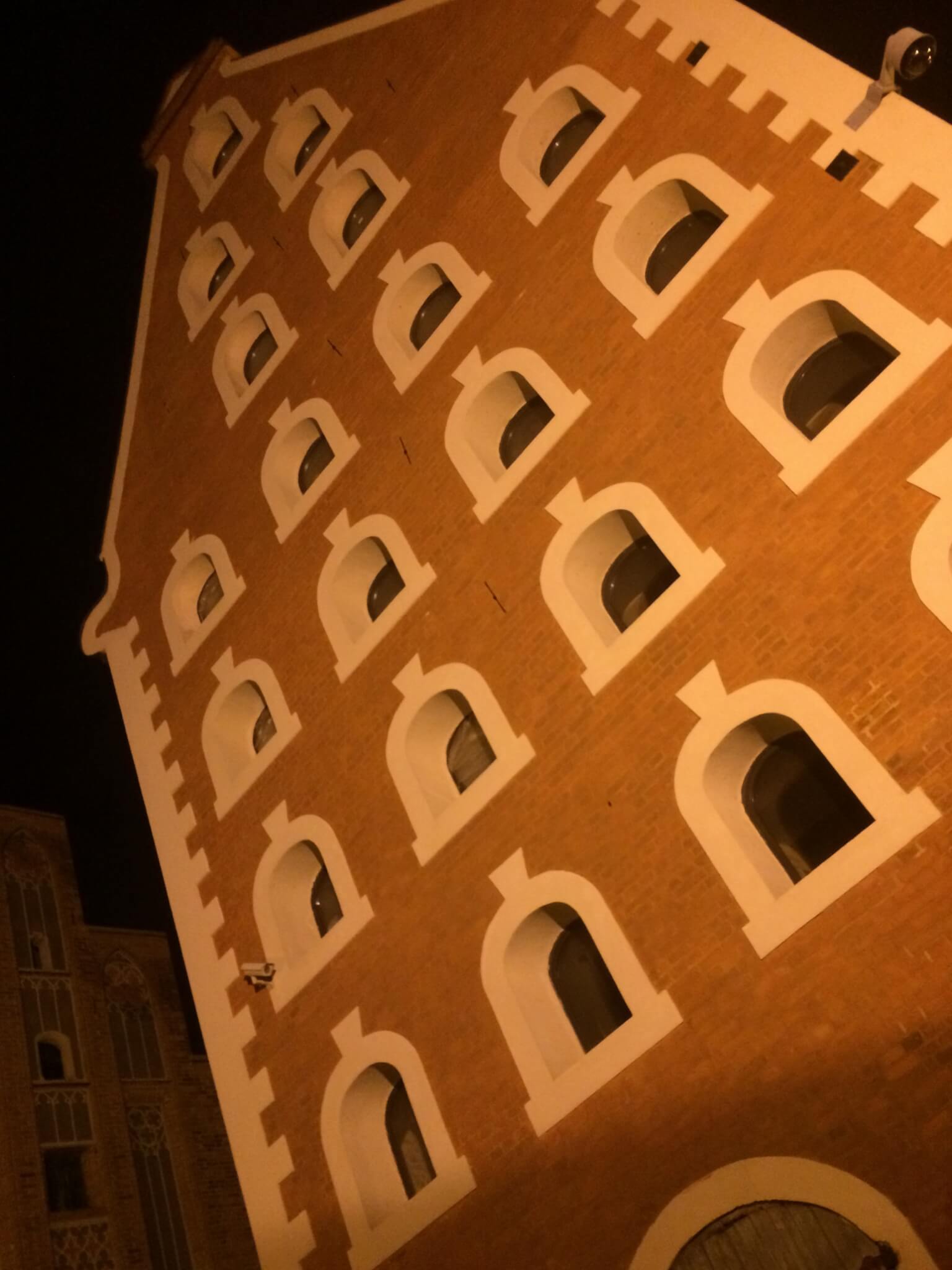Okay, we should not really call it a restaurant – but it is a stylish eatery serving good-quality Turkish ravioli, called Mantı (yes, that is no “i” in the end); filled dumplings served with yoghurt, garlic and sumac. After visiting Istanbul I was looking for a place like this, even if the Mantı aren’t as small in size as typical.
Continue reading “World of Manti”Swabian well
Stuttgart is a big city with a lot to see. But at the end of the day, you have to relax your feet and refresh yourself. A good place for that is the SchwabenQuellen located at an event center (with Broadway musicals and a casino; 10 km away from the city center) near Stuttgart; I always come here when I’m on business trips to the city.
Continue reading “Swabian well”Kulturzentrum Faust
Another concert in Hannover, Germany led me (again) to the Kulturzentrum Faust, an event location in the old bedspring factory of Hannover. It is a lovely place for small and medium size concerts in Linden-Nord and if the weather is good you can sit outside and enjoy a beer and a slice of pizza.
Continue reading “Kulturzentrum Faust”Diagonally throughout Poland
I did a lot of stupid but somewhat nice things during my life so far. One of these is exchanging my bahn.bonus points from Deutsche Bahn against a weekend of car rental once a year. It all started with me wanting to see the Mont St. Michel close to Pontorson, France. That is why I went there in 2012 by car from Köln, Germany with a pit stop in Bruges, Belgium.
Continue reading “Diagonally throughout Poland”Beautiful Warmia
Olsztyn (Allenstein) is a small town in Warmia (Ermland) and capital city of the region of Warmińsko-Mazurskie (Ermland-Masuren). It is 160 km southeast of Gdańsk and only 130 km south of the Russian city of Kaliningrad (Königsberg). The city has 175.000 inhabitants, the river Łyna (Alle) is crossing and around the town you’ll find wonderful woods and lake regions.
Continue reading “Beautiful Warmia”Like a fairy-tale
Gdańsk (Danzig) is a beautiful bead close to the Baltic, on the far northern east of Poland, only 160 km away from Kaliningrad (Königsberg). It has a wonderful old city center with small streets and narrow houses, fantastic gates (like the Brama Zielona) and churches. And lots of history to discover!
Continue reading “Like a fairy-tale”Villa Pica Paca
Looking for a hotel in Gdańsk, Poland close to the city center? On an island between the old (stara) and new (nowa) arms of river Motława you can find the Villa Pica Paca. I associated the name much more with South America but in fact it is a nice flatlet hotel within a typical house of Gdańsk.
Continue reading “Villa Pica Paca”No more war
The Westerplatte is a peninsula close to Gdańsk, Poland. It is well known because it is the place where World War II started. By that time Gdańsk (“Danzig”) was an independent state with mostly German residents enclosed by Poland and the exclave Königsberg/Allenstein of the Deutsches Reich.
Continue reading “No more war”Home to the German Order
Located 60 km southeast of Gdańsk, Poland you will find Malbork (Marienburg) close to the river Nogat. Its prime feature is Malbork Castle, a fortification built by the knights of the German Order in the 13th century. It is constructed in Brick Gothic style, normally common in northern Germany.
Continue reading “Home to the German Order”Toruń overnight
Toruń (Thorn) is a beautiful small town in the center of the northern half of Poland. It is one of the partner towns of my home town, Göttingen. I arrived here by car from Berlin on my way to Gdańsk in Pomorskie (Pomerania, Pommern). The city, located at the river Wisła, is well known for its old city center consisting of a lot of buildings in Brick Gothic style.
Continue reading “Toruń overnight”
